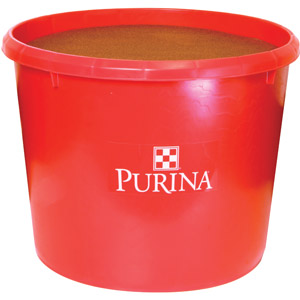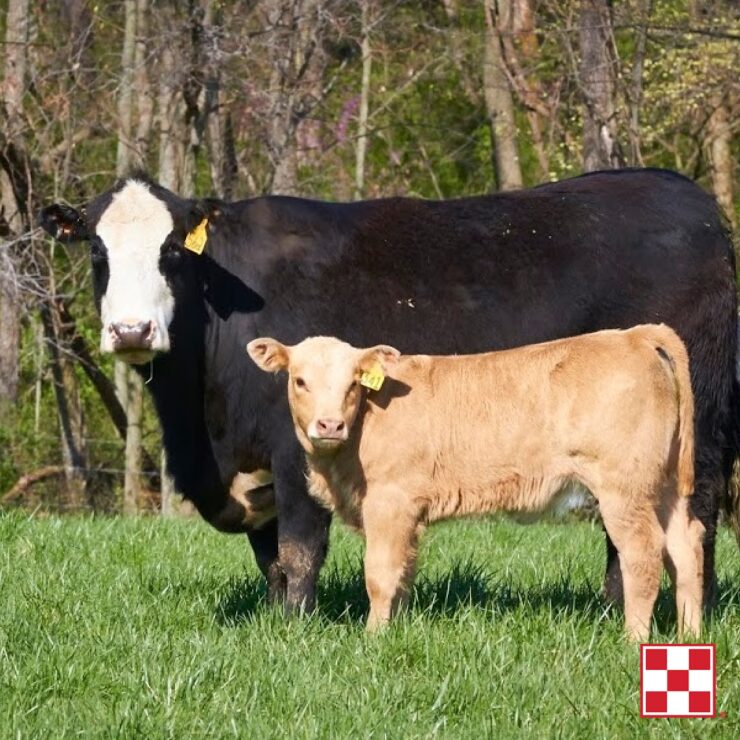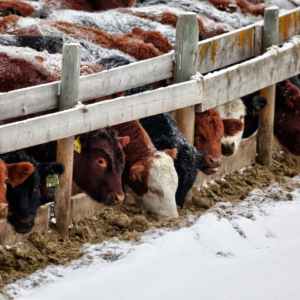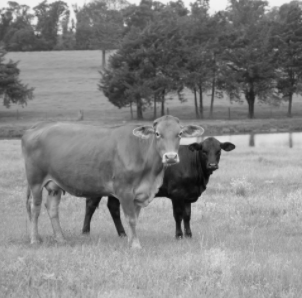 Come Rain or Shine: Altosid IGR Field Study – Much like the weather, fly populations can be a bit unpredictable during certain times of year. That’s often been the case with horn flies on pasture cattle. Populations have been known to rise after heavy rainfall events. This has created some mild concerns as producers question whether their feed-through fly control products are working effectively. To learn more, Purina sent a team into the field to see the effect heavy rainfall has on Altosid IGR.
Come Rain or Shine: Altosid IGR Field Study – Much like the weather, fly populations can be a bit unpredictable during certain times of year. That’s often been the case with horn flies on pasture cattle. Populations have been known to rise after heavy rainfall events. This has created some mild concerns as producers question whether their feed-through fly control products are working effectively. To learn more, Purina sent a team into the field to see the effect heavy rainfall has on Altosid IGR.
After conducting a study on various regions throughout the country, their team of experts came back with the same conclusion: heavy rainfall events can lead to a brief spike in horn fly numbers among cattle being treated with Altosid IGR. Yet all fly populations in the study returned to their normal levels of control within 1-2 weeks.
This information alone can be comforting. However, we wanted to provide treatment tips to help producers plan for and address these population spikes. Following these recommendations can work as an insurance against rising fly populations after heavy rainfall events.
Fly Control Tips:
- Monitor your local weather forecast to better predict when to begin treatments for each season.
- If you are already feeding Altosid IGR and notice fly populations exceeding the economic threshold following a rainfall event, knockdown adult fly populations with a spray such as Prolate/Lintox HD™ Insecticidal Spray and Backrubber from Starbar® Products.
- Continue feeding Altosid IGR! The product is still working to provide effective horn fly control, and should limit populations to their expected levels within a few weeks of the rain.
- Remember to feed Altosid IGR all the way through the season and 30 days after the last frost. This helps producers account for the unpredictability of the seasons and help limit the overwintering flies that will jumpstart the population the following spring.
Altosid IGR delivers effective horn fly control that producers have relied upon for nearly 50 years. While heavy rainfall may produce a brief uptick in horn fly numbers, producers that weather the storm and continue feeding Altosid IGR can help keep their cattle healthy and profitable all season long.
We offer Purina’s Wind & Rain Storm Fly Minerals, which are designed to reduce fly populations. Check out Kissimmee Feed’s Cattle Supplies here. Flies cause significant discomfort for cattle. As part of an integrated fly control program, Purina’s Wind and Rain with Altosid (MTH), helps restore cattle comfort while reducing factors that cause poor performance, and decreased grazing time. 225 lbs.





 Cattle Mineral Tips for Spring: As winter shifts to spring, it’s time to take a look at cattle management. Specifically, your cattle mineral program. Make sure cattle management, and cattle mineral, reflect the season to help keep cattle performing year-round.
Cattle Mineral Tips for Spring: As winter shifts to spring, it’s time to take a look at cattle management. Specifically, your cattle mineral program. Make sure cattle management, and cattle mineral, reflect the season to help keep cattle performing year-round. Vaccinate Your Cattle This January: As we start a new year, it’s important for cattle farmers to start thinking about vaccinating their herds. Vaccinating your cattle is one of the most important things you can do to protect their health, and ultimately, your livelihood. Let’s explore why January is a good time to start thinking about vaccinating your cattle, what vaccines are available, and how to determine which vaccines are right for your herd.
Vaccinate Your Cattle This January: As we start a new year, it’s important for cattle farmers to start thinking about vaccinating their herds. Vaccinating your cattle is one of the most important things you can do to protect their health, and ultimately, your livelihood. Let’s explore why January is a good time to start thinking about vaccinating your cattle, what vaccines are available, and how to determine which vaccines are right for your herd. December marks the beginning of winter, which also means that it’s the perfect time to start thinking about supplementing your livestock’s diet. As temperatures drop, animals can struggle to maintain their weight, and their bodies require more energy to keep warm. This time of year, it’s crucial to make sure your animals are getting enough food and nutrients to stay healthy. That’s why December may be a good time to start supplementing their diets. What types of supplements should you consider and how can you ensure your animals are getting the proper nutrition they need?
December marks the beginning of winter, which also means that it’s the perfect time to start thinking about supplementing your livestock’s diet. As temperatures drop, animals can struggle to maintain their weight, and their bodies require more energy to keep warm. This time of year, it’s crucial to make sure your animals are getting enough food and nutrients to stay healthy. That’s why December may be a good time to start supplementing their diets. What types of supplements should you consider and how can you ensure your animals are getting the proper nutrition they need? Water, shade and the right nutrition can help mitigate heat stress in cattle.
Water, shade and the right nutrition can help mitigate heat stress in cattle.